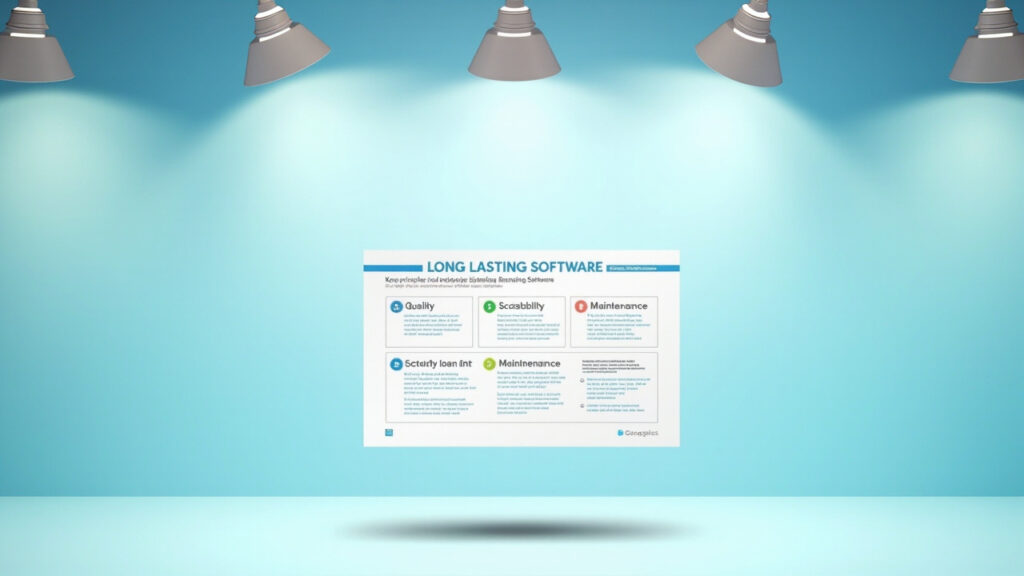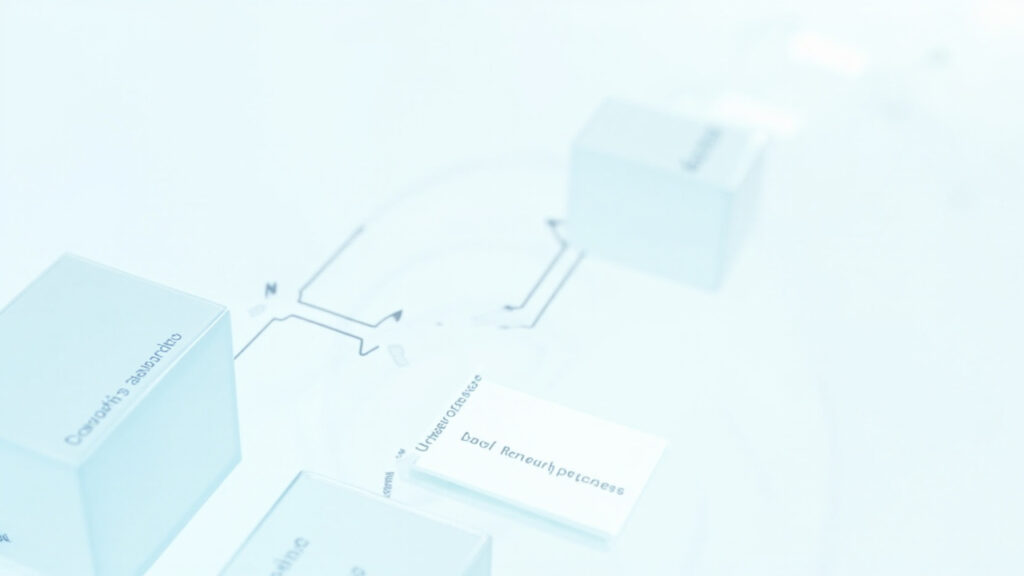In the rapidly evolving tech industry, building software that stands the test of time is a formidable challenge. Developers face a myriad of obstacles, from ever-changing technology landscapes to the increasing complexity of user demands. Yet, the quest for creating lasting software is more crucial than ever, as businesses and consumers alike rely heavily on digital solutions that are both robust and adaptable.
This comprehensive guide delves deep into the core strategies for developing long-lasting software. We’ll explore the importance of quality, adaptability, user-centered design, and the role of advanced tools like GenQE in ensuring the longevity of software projects. By the end of this article, you’ll gain valuable insights into creating applications that not only meet current needs but are also prepared for future challenges.
The Significance of Building Long-Lasting Software

Creating software that endures through technological shifts and user behavior changes is a vital competitive advantage. This section delves into why longevity is a critical aspect of software development and its impact on businesses and users.
Understanding the Impact on Business
Software that stands the test of time contributes significantly to a business’s operational continuity. Long-lasting software reduces the need for frequent updates or replacements, which can be costly and disruptive. It also ensures that businesses can maintain a consistent service quality, providing them with a competitive edge in a technology-driven market.
The Benefits to Users
For users, durable software means reliability and consistency in their daily interactions with technology. Software that rarely needs significant changes minimizes the learning curve and adaptation stress for users, leading to higher satisfaction and loyalty.
The Role of Software in a Changing Technological Landscape
As technology evolves, so do the challenges associated with software development. Building software that can adapt to new technologies and user expectations is not just beneficial but necessary. This adaptability is key to ensuring the longevity of software, making it a crucial factor in the development process.
Key Principles for Developing Long-Lasting Software

To build software that lasts, developers must adhere to several foundational principles. This section outlines these principles, providing a roadmap for creating durable and effective software solutions.
Emphasis on Quality from the Start
Quality must be a priority from the initial stages of software development. High-quality software is less prone to issues and can be more easily updated or integrated with new technologies.
Scalability and Flexibility
Software must be designed with scalability in mind. This means anticipating future needs and ensuring that the software can handle increased loads or expanded functionalities without significant overhauls.
Regular Updates and Maintenance
Contrary to the notion that long-lasting software doesn’t require changes, regular updates are crucial to address emerging vulnerabilities and to integrate new features that meet evolving user needs. Effective maintenance strategies can significantly extend the lifespan of software.
Designing with the User in Mind

User-centered design is paramount in developing software that remains relevant over time. This section explores how focusing on the user experience can contribute to software longevity.
Understanding User Needs
Deep insight into user behavior and preferences helps in crafting software that genuinely meets their needs. This involves continuous user feedback and engagement throughout the development process.
Building Intuitive and Accessible Interfaces
Software interfaces should be intuitive and accessible, ensuring that users of all skill levels can navigate and utilize the software effectively. This increases user adoption and satisfaction, key metrics for long-term viability.
Adapting to User Feedback
Incorporating user feedback into the development cycle is essential. It allows developers to make informed adjustments that enhance the software’s usability and functionality, promoting longer shelf life.
Leveraging Advanced Tools: The Role of GenQE

In an age where efficiency and quality are paramount, tools like GenQE play a crucial role in enhancing the longevity of software. This section discusses how GenQE can be integrated into development processes to build robust, lasting software.
AI-Driven Test Generation
GenQE automates the creation of test cases, which not only speeds up the testing phase but also ensures comprehensive coverage—a key factor in long-term software reliability.
Self-Healing Automation
The self-healing capabilities of GenQE minimize downtime and maintenance efforts by automatically adjusting test scripts when changes occur. This feature is crucial for maintaining long-term software quality with minimal manual intervention.
Seamless Integration with CI/CD Tools
By integrating with existing CI/CD pipelines, GenQE ensures that testing is a continuous and efficient part of the software development lifecycle, helping to catch and fix issues before they impact the user experience.
Case Studies: Success Stories of Long-Lasting Software

This section provides real-world examples of businesses that have successfully implemented strategies for long-lasting software, underscoring the practical applications and benefits of the approaches discussed.
Case Study 1: Enterprise Software Upgrade
A detailed analysis of how a major enterprise successfully upgraded their legacy systems with a focus on scalability and user-centric design, resulting in a robust platform that supports current operations and is ready for future expansions.
Case Study 2: E-commerce Platform Revamp
An exploration of how an e-commerce company utilized user feedback and regular updates to transform their platform, significantly improving user experience and operational efficiency.
Conclusion: The Path to Durable Software

Developing long-lasting software is an ongoing challenge that requires a strategic approach, focusing on quality, user experience, and the integration of advanced tools like GenQE. By embracing these elements, developers can create software that not only meets the demands of today but is also prepared for the future. As we continue to navigate a digital-dominated world, the importance of building durable, adaptable software cannot be overstated.
For those looking to enhance their software development strategies with cutting-edge tools, exploring solutions like GenQE could be a significant step towards achieving software longevity and excellence.
Discover More Innovative Solutions
Want to learn more about the tools and technologies discussed in this article? Explore how these innovations can be tailored to your specific needs and workflow requirements.
Our team of experts is available to answer your questions and provide personalized insights into how modern solutions like GenQE can address your specific challenges.